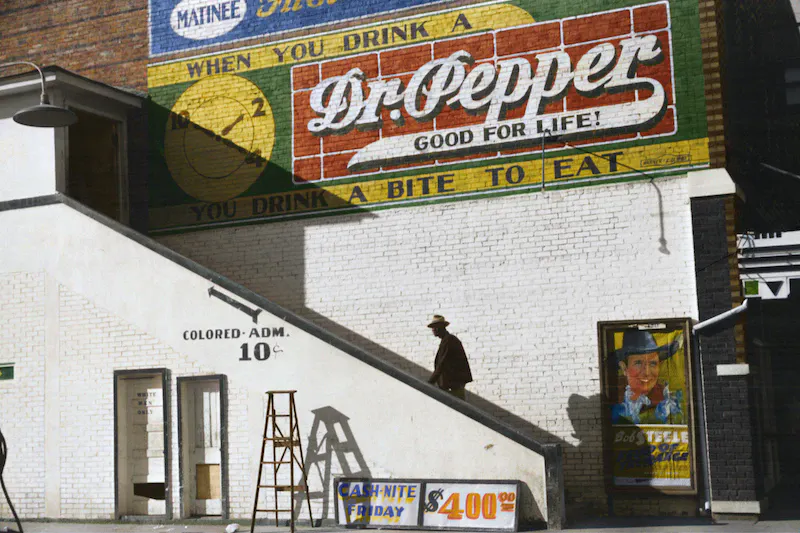The Disturbing Reality of Human Trafficking in Canada: What You Need to Know

The Reality of Domestic Sex Trafficking: An Issue That Demands Our Attention
Domestic sex trafficking is a harsh reality that affects people across the globe, and it’s a crime that has largely gone unnoticed for too long. The exploitation of vulnerable individuals, particularly women and children, for sexual purposes, is a heinous crime that can take on many forms, from forced prostitution to pornography. In many cases, these individuals are coerced or manipulated into a life of sexual servitude, and it can be incredibly challenging for them to escape.
One of the main factors that contribute to the perpetuation of domestic sex trafficking is the lack of awareness surrounding the issue. Many people are unaware of the scope and scale of this problem and often misunderstand the dynamics of how it works. For example, some may assume that sex trafficking only happens in certain parts of the world, but in reality, it’s a global problem.
The speaker in the video script, a survivor of domestic sex trafficking, highlights the importance of raising awareness about this issue. She emphasizes the importance of educating people about the signs of trafficking and how to report it. This could involve identifying red flags such as a person who seems to be under the control of another, or the presence of numerous unrelated individuals living in the same house.
It’s also essential to understand the complexity of this issue and how it can manifest in different ways. For example, the speaker mentions how traffickers may manipulate individuals into believing they are in love with them or by offering them money or a better life, only to then trap them in a cycle of abuse and exploitation.
It’s crucial to recognize that anyone can be a victim of domestic sex trafficking, regardless of their background or socioeconomic status. However, some groups may be more vulnerable, such as those who have experienced trauma, are homeless or runaways, or come from marginalized communities.
In conclusion, domestic sex trafficking is a crime that demands our attention. By educating ourselves and raising awareness about this issue, we can take steps towards combating it and supporting survivors. It’s essential to understand the complexity of this issue and how it can manifest in different ways, as well as to recognize that anyone can be a victim. Together, we can work towards creating a world where individuals are not exploited for profit, but instead treated with dignity and respect.
Domestic Sex Trafficking in Canada
Domestic sex trafficking is not just an issue that occurs in other countries. It is happening right here in Canada, in our own schools, communities, and neighborhoods. The victims of domestic sex trafficking are often young people who are vulnerable due to their age, gender, or socio-economic status.
One example from the video is a story of a 14-year-old girl who was befriended by an older man who showered her with gifts and attention. Eventually, he convinced her to start selling sexual services to his friends. Another example is a group of teenage girls who were lured into the sex trade by a man who promised to pay them for modeling jobs.
Many victims of domestic sex trafficking are too afraid to speak out or seek help because they fear for their safety or the safety of their loved ones. In addition, there is a lack of awareness and understanding about this issue among the general public, which makes it difficult to identify victims and provide them with the help they need.
It is important for all Canadians to recognize that domestic sex trafficking is happening in our own communities, and to take action to address it. This can involve supporting organizations that provide services to victims, advocating for changes in laws and policies, and educating ourselves and others about the signs of sex trafficking and how to report it.
Four Elements Present in Human Trafficking
Human trafficking is a complex and insidious crime, and there are four elements that are commonly present in this illegal trade: force, fraud, coercion, and facilitation by a third party or group of people.
Firstly, force involves the use of physical violence or threats to control and exploit victims. For instance, traffickers may use physical force to coerce victims into submission, such as beating them or tying them up.
Secondly, fraud involves deceiving victims into trafficking situations. For example, traffickers may pose as legitimate employers, promising victims good jobs and a better life, only to trap them into exploitative situations upon arrival.
Thirdly, coercion is the use of psychological manipulation and threats to control victims. This may include threats to harm victims or their loved ones, or false promises of a better life in exchange for compliance.
Lastly, the facilitation by a third party or group of people involves the involvement of individuals or groups in the trafficking process. These could be recruiters who identify and target vulnerable individuals for trafficking, or individuals who transport victims across borders or provide them with fake documents.
By understanding these four elements of human trafficking, we can work towards identifying and preventing this heinous crime. It is essential to raise awareness and educate individuals, communities, and law enforcement agencies to recognize the signs of human trafficking and take action to protect victims.
Human trafficking is a thought-out psychological process that people are brought through for someone to have control and manipulation over.
The speaker explains that human trafficking is not just about physical force, but also about psychological manipulation. Traffickers use tactics such as emotional abuse, threats, and isolation to gain control over their victims. This control allows them to manipulate their victims into doing what they want, without physical force.
The speaker also notes that many people who are trafficked have experienced some form of trauma in their past, making them more vulnerable to the tactics used by traffickers. Traffickers will often prey on these vulnerabilities to gain control and maintain their power over their victims.
The psychological process of human trafficking can take a toll on the victim’s mental health, causing lasting trauma and making it difficult for them to recover. It is important for society to recognize the impact that human trafficking can have on victims, and work towards prevention and support for survivors.
There are three stages in commercial exploitation: luring, grooming, and coercion
According to the video script, commercial exploitation happens in three stages: luring, grooming, and coercion.
In the first stage, luring, the trafficker identifies and targets a victim. They might approach them in person or online, and use different tactics to gain their trust, such as offering them a job, a place to stay, or promising them a better life.
In the second stage, grooming, the trafficker builds a relationship with the victim, often providing them with basic needs, such as food, shelter, or affection. The victim may start to see the trafficker as a friend or even a romantic partner. The trafficker may also use drugs or alcohol to make the victim more compliant and easier to control.
In the final stage, coercion, the trafficker uses different forms of violence and manipulation to force the victim into commercial exploitation. This might include physical abuse, psychological manipulation, or threats against the victim or their loved ones.
It’s important to note that these stages are not always linear, and victims may be subjected to multiple forms of abuse at the same time. Being aware of these stages and the tactics that traffickers use can help us identify potential victims and prevent exploitation from happening.
The luring stage: Assessing vulnerabilities
In the luring stage, the trafficker begins to assess the victim’s vulnerabilities and put feelers out to figure them out. This can happen in person or online. Traffickers may use social media, dating apps, or other online platforms to reach out to vulnerable individuals. In some cases, traffickers may even approach their victims in public places such as shopping centers, parks, or schools.
During this stage, the trafficker will often use manipulation tactics to make the victim feel comfortable and secure, building a sense of trust and connection. This is done so that the victim will be more likely to accept the trafficker’s proposals later on. The victim may be promised things such as love, a better life, or money, and may be given gifts or favors to create a sense of indebtedness.
For example, in the video, the speaker describes how a trafficker used flattery and gifts to lure her into a relationship. He bought her flowers, took her to fancy restaurants, and made her feel special. This made it easier for him to manipulate and control her later on.
It is important to note that anyone can be vulnerable to trafficking, regardless of their age, gender, or background. However, there are certain risk factors that can make individuals more vulnerable, such as poverty, homelessness, addiction, or a history of abuse. It is essential to be aware of these risk factors and to take steps to protect oneself from potential traffickers.
The Grooming Stage in Human Trafficking
After the luring stage, the trafficker moves onto grooming the victim. This stage is where the trafficker starts to build trust and emotional connections with the victim. They will often try to meet every basic need of the victim, such as food, shelter, and even love and affection.
According to the video script, the trafficker will introduce the victim to their friends and people who appear to be successful in life. This is done to create a sense of trust and security, making it easier for the trafficker to manipulate the victim. By meeting their emotional needs, the trafficker will establish a sense of obligation from the victim towards them, making it more difficult for them to escape or seek help.
The grooming stage can also involve the trafficker exposing the victim to drugs or alcohol, leading to a dependence on these substances. This dependence can further tie the victim to the trafficker as they may feel like they cannot survive without them.
It is important to note that the grooming stage can last for a long time, and victims may not even realize they are being groomed for exploitation. The more the victim feels like they owe the trafficker, the more they will be controlled and manipulated.
Overall, the grooming stage is a crucial aspect of human trafficking, and it is important for individuals to be aware of the signs of grooming in order to prevent exploitation.
The coercion and manipulation stage is when the trafficker begins to break down your boundaries, morals, and values, and then rewards you for them.
During the coercion stage, traffickers use a variety of tactics to manipulate their victims into compliance, such as emotional manipulation, threats, and violence. They begin to break down their boundaries, morals, and values by making them feel indebted to the trafficker for providing basic needs such as food, shelter, and clothing. In some cases, traffickers will also use drugs to control their victims.
As the victim becomes more compliant, the trafficker will begin to offer them rewards for their obedience. This may include gifts, money, or even temporary freedom. Over time, the victim’s sense of self-worth and identity become tied to their relationship with the trafficker, making it even harder for them to leave.
The speaker in the video describes how her trafficker used a combination of rewards and punishments to keep her under his control. He would beat her when she did something wrong, but also reward her with money or drugs when she complied with his demands. This cycle of abuse and reward kept her trapped in the situation for years.
It’s important to understand the coercion and manipulation stage so that we can recognize the signs of trafficking and help victims escape. By educating ourselves and others about the tactics used by traffickers, we can work to prevent and combat human trafficking.
Conclusion
Human trafficking is a global issue that affects people of all ages and backgrounds. It is a complex and thought-out process that involves the exploitation of vulnerable individuals for financial gain. Domestic sex trafficking is a particular issue in Canada, and it is happening in our schools, communities, and neighborhoods.
There are four elements present in human trafficking: force, fraud, coercion, and facilitation by a third party or group of people. These elements are used to maintain control over the victim and manipulate them for the benefit of the trafficker.
The commercial exploitation process involves three stages: luring, grooming, and coercion. During the luring stage, the trafficker assesses the victim’s vulnerabilities and puts feelers out to figure them out. In the grooming stage, the trafficker meets every basic need of the victim and introduces them to their friends. Finally, in the coercion and manipulation stage, the trafficker breaks down the victim’s boundaries, morals, and values, and rewards them for complying.
It is essential to raise awareness about human trafficking and to educate ourselves and others about the signs and red flags. We can all play a role in preventing human trafficking by supporting organizations that provide services to survivors and by advocating for stronger laws and policies to combat trafficking.
By coming together as a community, we can work to end human trafficking and ensure that no one is subjected to this heinous crime. It is important to remember that behind every trafficking statistic is a human being with a story, a family, and a life. Let us work together to ensure that these stories end in freedom and not in exploitation.



